
Agnes George de Mille was an American dancer and choreographer.
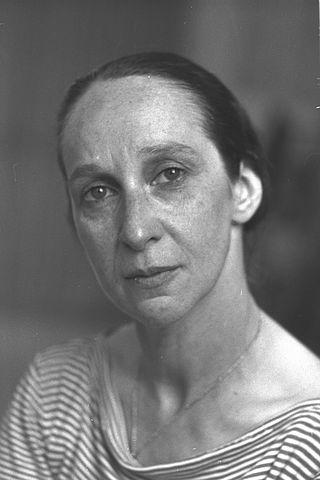
Anna Sokolow was an American dancer and choreographer. Sokolow's work is known for its social justice focus and theatricality. Throughout her career, Sokolow supported of the development of modern dance around the world, including in Mexico and Israel.
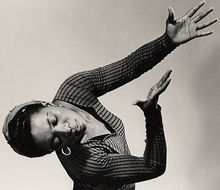
Pearl Eileen Primus was an American dancer, choreographer and anthropologist. Primus played an important role in the presentation of African dance to American audiences. Early in her career she saw the need to promote African dance as an art form worthy of study and performance. Primus' work was a reaction to myths of savagery and the lack of knowledge about African people. It was an effort to guide the Western world to view African dance as an important and dignified statement about another way of life.
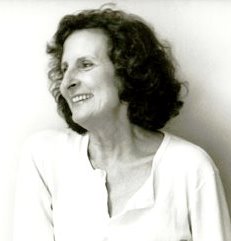
Trisha Brown was an American choreographer and dancer, and one of the founders of the Judson Dance Theater and the postmodern dance movement. Brown’s dance/movement method, with which she and her dancers train their bodies, remains pervasively impactful within international postmodern dance.

Mia Michaels Melchiona is an American choreographer and judge on the television show So You Think You Can Dance. She has worked with Tom Cruise, Celine Dion, Gloria Estefan, Madonna, Ricky Martin, Prince, and Catherine Zeta-Jones. In 2005 she choreographed Cirque du Soleil's world tour Delirium and Celine Dion's A New Day..., for which she received an Emmy Award nomination. In 2007 she won a Primetime Emmy Award for Outstanding Choreography for her routine on "Calling You" during season two of So You Think You Can Dance. She won another Emmy Award during season five in 2010. She was a judge during season 7 with Adam Shankman and Nigel Lythgoe. She choreographed the dance sequence for "Get Happy" in the episode "Bombshells" of the television series House.
Susan Marshall is an American choreographer and the Artistic Director of Susan Marshall & Company. She has held the position of Director of the Program in Dance at Princeton University since 2009.
Laura Dean is an American dancer, choreographer and composer. She is known for her collaborations with Steve Reich, a number of commissioned works for the Joffrey Ballet, and works for her own dance companies. Dean's earliest works were marked by a minimalist approach and an affinity for spinning; her later work saw more use of traditional dance methods.

Paul Belville Taylor Jr. was an American dancer and choreographer. He was one of the last living members of the third generation of America's modern dance artists. He founded the Paul Taylor Dance Company in 1954 in New York City.
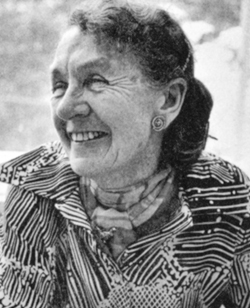
Bessie Schonberg was a highly influential dancer, choreographer and teacher of the 20th century. She was at the center of contemporary modern dance from her beginning at Bennington College up until her death in 1997. Her career spanned sixty-five years and she helped mold a new generation of modern dancers including Lucinda Childs, Elizabeth Keen, Meredith Monk and Carolyn Adams (dancer).
Capturing a sense of the life and work of Bessie Schonberg is possible if one evokes the image of a prism, a multi-face crystalline object which cannot be perceived in its entirety, but can be appreciated and understood by catching glimpses of light from its different sides.
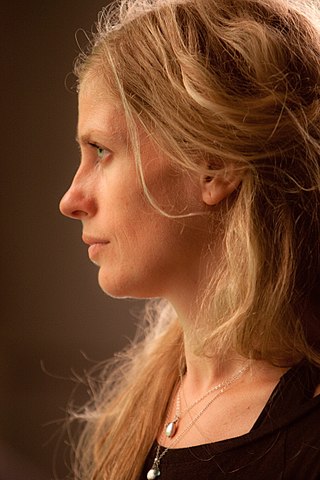
Crystal Pite is a Canadian choreographer and dancer. She began her professional dance career in 1988 at Ballet BC, and in 1996 she joined Ballett Frankfurt under the tutelage of William Forsythe. After leaving Ballett Frankfurt she became the resident choreographer of Montreal company Les Ballets Jazz de Montreal from 2001 to 2004. She then returned to Vancouver where she focused on choreographing while continuing to dance in her own pieces until 2010. In 2002 she formed her own company called Kidd Pivot, which produced her original works Uncollected Work (2003), Double Story (2004), Lost Action (2006), Dark Matters (2009), The You Show (2010), The Tempest Replica (2011), Betroffenheit (2015), and Revisor (2019) to date. Throughout her career she has been commissioned by many international dance companies to create new pieces, including The Second Person (2007) for Netherlands Dans Theater and Emergence (2009) for the National Ballet of Canada, the latter of which was awarded four Dora Mavor Moore Awards.

Ann Marie DeAngelo is an American choreographer, director, producer, teacher, consultant and former dancer - an expert in all areas of dance. She was leading ballerina with the Joffrey Ballet, where early on she was pegged by Time magazine as "one of America's most outstanding ballerinas" and where she later served as associate director at the time of the company's move to Chicago in 1995.
Marie-Agnès Gillot is a French ballet dancer and choreographer. She danced with the Paris Opera Ballet as an étoiles. She is also POB's first in-house female dancer to choreograph for the company.
Sharon Kinney is an American dancer, choreographer, teacher, and videographer. She was an original member of the Paul Taylor Dance Company and has worked with other notable artists such as Dan Wagoner, Yuriko, and Twyla Tharp. She is noted for creating dance for stage and film, and for exploring dance for the camera. She was awarded the 2009 Balasaraswati/Joy Ann Dewey Beinecke Endowed Chair for Distinguished Teaching to honor her outstanding contributions as a teacher to "shape and preserve dance across generations."
The physically integrated dance movement is part of the disability culture movement, which recognizes and celebrates the first-person experience of disability, not as a medical model construct but as a social phenomenon, through artistic, literary, and other creative means.
Big Dance Theater is a New York City-based dance theater company. It is led by Artistic Director Annie-B Parson, who founded Big Dance Theater in 1991 with Molly Hickok and Paul Lazar. Big Dance Theater has created over 20 dance/theater works and won 18 awards over the years. They have been commissioned by the Brooklyn Academy of Music, The National Theater of Paris, The Japan Society, and The Walker Art Center, and have performed in venues such as the Brooklyn Academy of Music, Dance Theater Workshop, The Kitchen, Classic Stage Company, Japan Society, Jacob's Pillow Dance Festival, the Chocolate Factory, the Museum of Contemporary Art in Chicago, Walker Art Center, Yerba Buena, On the Boards, New York Live Arts, UCLA Live, The Spoleto Festival USA, and at festivals in Europe and Brazil.
Emily Johnson is an American dancer, writer, and choreographer of Yup'ik descent. She grew up in Sterling, Alaska, and is based in New York City. She is artistic director of her performance company, Emily Johnson/Catalyst. Johnson is a organizer for the First Nations Dialogues New York/Lenapehoking. She has worked part-time at Birchbark Books, an independent bookstore owned by author Louise Erdrich.
Annie-B Parson is an American choreographer, dancer, and director based in Brooklyn, New York. Parson is notable for her work in dance/theater, post-modern dance, and art pop music. Parson is the artistic director of Brooklyn's Big Dance Theater, which she founded with Molly Hickok and her husband, Paul Lazar. She is also well known for her collaborations with Mikhail Baryshnikov, David Byrne, David Bowie, St. Vincent, Laurie Anderson, Jonathan Demme, Ivo van Hove, Sarah Ruhl, Lucas Hnath, Wendy Whelan, David Lang, Esperanza Spalding, Mark Dion, Salt ‘n Pepa, Nico Muhly, and the Martha Graham Dance Co.
Nejla Y. Yatkin is a German-American choreographer.

Blondell Cummings was an American modern dancer and choreographer. She is known for her experimental choreography and was a fixture in the New York and Harlem dance scene for decades.
Sarah Michelson is a British choreographer and dancer who lives and works in New York City, New York. Her work is characterized by demanding physicality and repetition, rigorous formal structures, and inventive lighting and sound design. She was one of two choreographers whose work was included in the 2012 Whitney Biennial, the first time dance was presented as part of the bi-annual exhibition. Her work has also been staged at The Walker Art Center, Jacob’s Pillow Dance Festival, The Kitchen, and the White Oak Dance Project. She received New York Dance and Performance awards for Group Experience (2002), Shadowmann Parts One and Two (2003), and Dogs (2008). She has served as associate director of The Center for Movement Research and associate curator of dance at The Kitchen. Currently choreographer in residence at Bard's Fisher Center, she is the recipient of their four-year fellowship to develop a commissioned work with Bard students and professional dancers.









